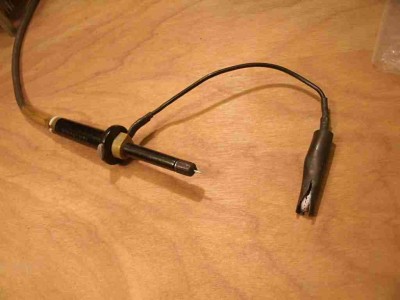Quote:
I'm getting about 0.5V peak-to-peak noise on my 3.3V line
For those not yet well versed in the use of oscilloscopes, it's a highly worthwhile exercise to spend some time scoping the
ground connections of your project. You might expect ground to read as just a flat line, but that's rarely what you'll see when there's fast logic that's switching nearby.
As you improve your technique (and this depends heavily on the use of a short ground lead on your scope probe, as shown in the photo) you'll see ground get quieter and quieter on the screen. Probably you won't achieve the ideal, perfectly flat line, but do give it some effort before you decide it's "good enough."
The point is, the scope will usually be showing you a certain amount noise that's not relevant, such as the noise picked up by a probe ground lead that's excessively long, attached to the wrong point in the project, or -- worst of all! -- simply absent. Your first line of defense is to limit stray noise pickup as much as you reasonably can. Then step two is to apply a mental fudge factor.
So, for example, if you scope the ground pin of an IC then scope the Vcc pin, and
both pins seem to have the same type and amount of noise, then no problem is indicated WRT the power to that IC -- even though you may
seem to have "about 0.5V peak-to-peak noise" on the Vcc pin.
-- Jeff
PS- Andrew, I'm not suggesting your observation is wrong, just saying that all such observations have potential to be misleading. Also, even the "short" ground lead in the photo is longer than ideal -- a compromise.

_________________
In 1988 my 65C02 got six new registers and 44 new full-speed instructions!
https://laughtonelectronics.com/Arcana/ ... mmary.html






